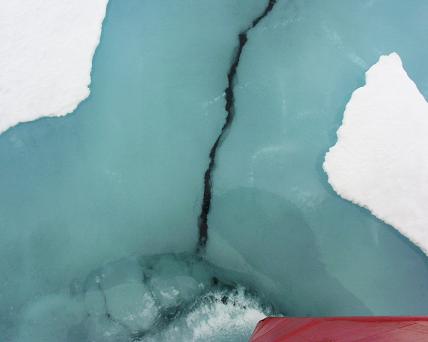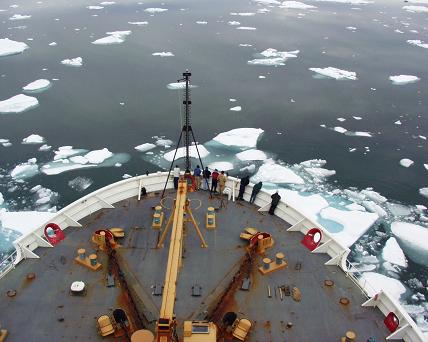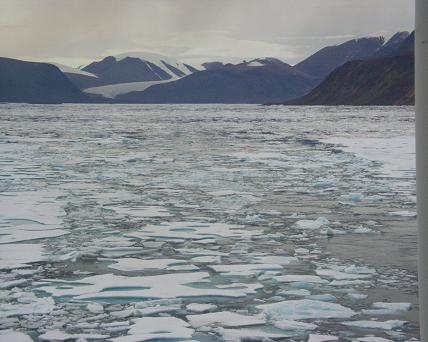|
|
Expedition
Expedition | People
|
Log - August-4-2003
by Robert McCarthy
Previous | Next
We're Here!
Robert McCarthy |
 |
Today we started to place the expensive moorings in the water. The bottom mounted ADCP (Acoustic Doppler Current Profilers) moorings, that were assembled on the back deck in transit from Newfoundland, are ready to start their long two year stay on the ocean floor here at 80 N latitude. In two years, the scientists and crew will return here to trigger the acoustic releases. The big yellow floats will bring the ADCPís to the surface with the acoustic releases, so they will recover everything except the weights that hold them down. That is VERY important for two reasons, first they have the data on them, which has been recording flow through the Nares Straight for the past two years, and secondly, each mooring costs about $100,000. These instruments will be recovered in the spring, so they are expecting an under-the-ice recovery. So the metal cage around the top of the ADCP will protect the sensors when they hit the underside of the ice. Upon recovery, the scientists will download the data, replace the battery pack, reset the instruments, and re-deploy them for yet another two-year stay in the same location. The sensors and releases are made out of titanium, so they will look brand new. |
| We are now in the narrow section between Greenland and Ellesmere Island known as the Kennedy Channel. Kennedy Channel connects Kane Basin to the south with Hall Basin to the north. The Lincoln sea is just north of Hall Basin, and the science crew would love to get there to place a few more pressure sensors if ice and time permit. The ice conditions that allowed us to get this far north was a big question, but again we have been lucky. We have hit and broken through some pretty impressive sea ice, and this ship continues to amaze me. We are privileged to stand right at the bow, and look straight down as the ship momentarily slides up onto the ice a few feet, before the shear weight of the ship breaks through the ice. VERY COOL, and loud. The strength of sea ice is highly variable. As the salinity of the ice goes down (over time, the salt content seeps out), the strength of the ice goes up. This is because salt is an impurity in the crystalline structure, thereby weakening it. So old ice is stronger than new ice. Also, as the temperature goes down, the strength of the ice goes up. The strength is also a function of how fast it forms. The faster it forms, the more salt is entrained in the ice, so the weaker the ice is. Even though the strength of the ice is variable, the ship can break through 4.5 feet of ice while cruising at 3 knots, which is about 3.5 miles per hour. Thatís a lot of power! The ship can supply 30,000 horsepower. I didnít work it out, but Iím impressed. Tomorrow Iíll talk about the moorings again, and what the scientists hope to discover. |
 |
 |
 |
|
